Solids, liquids and gases -> copper
Copper: Properties, Uses, and Importance
Copper is a chemical element with the symbol Cu and atomic number 29. It is a transition metal and has been used by humans for thousands of years due to its various useful properties.
Properties of Copper
- Physical Properties: Copper is a reddish-brown metal with a bright metallic luster. It is ductile, meaning it can be drawn into thin wires, and malleable, allowing it to be hammered into thin sheets. Copper is an excellent conductor of electricity and heat.
- Chemical Properties: Copper does not react with water, but it can react with atmospheric oxygen to form a layer of greenish-colored copper oxide on its surface, known as patina. It also reacts with certain acids and other chemicals.
Uses of Copper
Copper has numerous applications due to its versatile properties:
- Electrical Wiring: Copper is widely used in electrical wiring and conductors due to its excellent electrical conductivity.
- Plumbing and Heating Systems: Due to its resistance to corrosion, copper is commonly used in plumbing and heating systems.
- Construction: Copper is used in roofing, gutters, and architectural elements due to its durability and aesthetic appeal.
- Industrial Machinery: Copper is used in the production of industrial machinery and equipment due to its heat conductivity and resistance to corrosion.
- Coins and Currency: Copper has historically been used to make coins and is still used in some coinage today.
Importance of Copper
Copper is an essential element for various industries and plays a crucial role in modern society. Its use in electrical conductivity and heat transfer makes it indispensable in the development of technology and infrastructure.
Study Guide
Here are some key points to remember about copper:
- What is the chemical symbol and atomic number of copper?
- What are the physical properties of copper?
- Explain the chemical properties of copper.
- What are the main uses of copper?
- Why is copper important in modern society?
Understanding the properties, uses, and importance of copper is crucial for anyone studying chemistry, materials science, or engineering.
[Copper] Related Worksheets and Study Guides:
.◂Science Worksheets and Study Guides Sixth Grade. Solids, liquids and gases
Study Guide Solids, liquids and gases
Solids, liquids and gases  Activity Lesson
Activity Lesson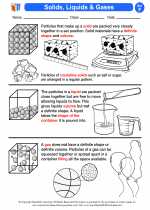 Solids, Liquids & Gases
Solids, Liquids & Gases  Worksheet/Answer key
Worksheet/Answer key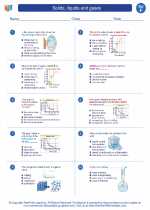 Solids, liquids and gases
Solids, liquids and gases  Worksheet/Answer key
Worksheet/Answer key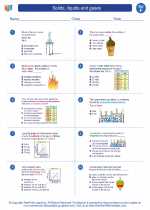 Solids, liquids and gases
Solids, liquids and gases  Worksheet/Answer key
Worksheet/Answer key Solids, liquids and gases
Solids, liquids and gases  Vocabulary/Answer key
Vocabulary/Answer key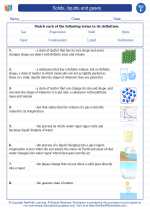 Solids, liquids and gases
Solids, liquids and gases  Vocabulary/Answer key
Vocabulary/Answer key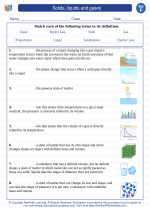 Solids, liquids and gases
Solids, liquids and gases 

 Activity Lesson
Activity Lesson
 Worksheet/Answer key
Worksheet/Answer key
 Worksheet/Answer key
Worksheet/Answer key
 Worksheet/Answer key
Worksheet/Answer key
 Vocabulary/Answer key
Vocabulary/Answer key
 Vocabulary/Answer key
Vocabulary/Answer key

The resources above cover the following skills:
PHYSICAL SCIENCE
Energy
Students who demonstrate understanding can:
Plan an investigation to determine the relationships among the energy transferred, the type of matter, the mass, and the change in the average kinetic energy of the particles as measured by the temperature of the sample.